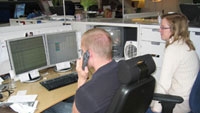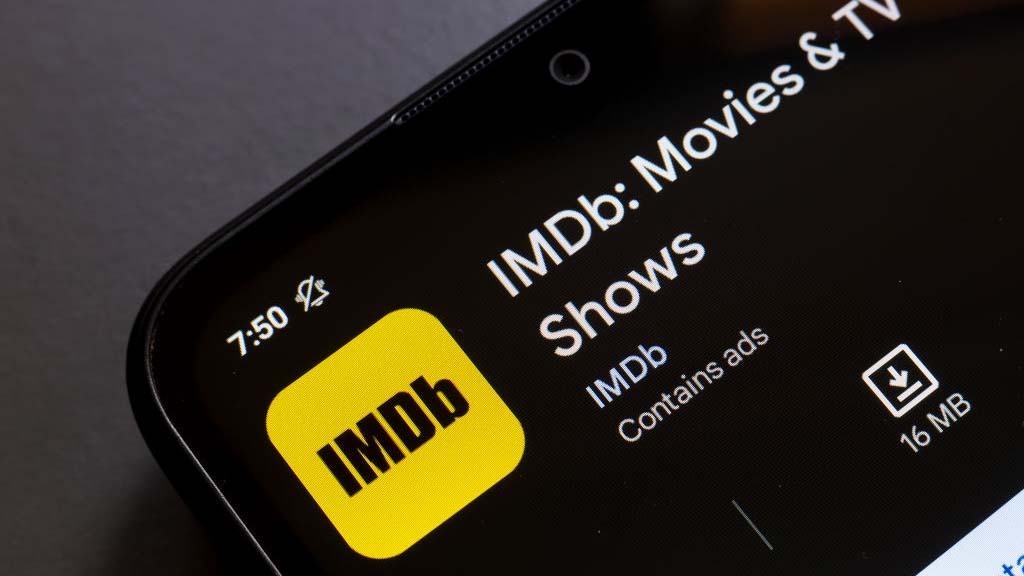Back-office solutions
Because of the large number of channels being offered, many viewers often don't know which channel or program they are watching or what else the channel has to offer. In an effort to inform the viewer as frequently and accurately as possible, stations are inventing new ways of communicating with the audience. Text messages, pictures and promotion videos appear before, between and even during the main transmissions.
Anything goes to capture the audiences' attention, but all this comes at a price. This article will not elaborate on the aesthetics of these techniques or on the intrusions such messages might cause. Instead, the focus will be on how to reduce the scheduling and production effort and which challenges still need to be solved.

Today, advanced channel management systems are helping the message schedulers by automatically placing messages and calculating the correct content of messages. Most of the time this is a manual process where a marketing person analyzes the schedule and decides when to place which message. Some of the desired messages are from the graphics and promo department that will create and store the requested clips. Other simple text messages to the viewers are sent in an e-mail to the automation operator who will enter them as secondary events in the playlist.
This process is both laborious, inflexible and error-prone. In an ideal world, the marketing person would schedule the messages, and the automation — in combination with a graphics engine — would render the messages during playout without any further human intervention.
Secondary events can be added automatically by applying a style sheet. A style sheet is a rule-based description of when to add which kind of messages in the schedule combined with a calculation of what the content of the message should be. For example, before every commercial break, a message is shown to the viewer that mentions “End of part x,” the name of the program and maybe an appropriate still of the program. In other words, the scheduling system has to look up the part number, the name and a still of the currently running program.
A “coming up” message, on the other hand, would have to look further down the schedule and find start times and titles of the next few programs. For overviews about the content of different channels, “now playing” messages require the scheduling system to look into the schedules of affiliated channels. The type of message defined in the style sheet triggers the different techniques for extracting the relevant information from the schedule.
Automating promotions and trailers
The professional video industry's #1 source for news, trends and product and tech information. Sign up below.
For promotions and trailers, the extraction of information is again different. In this case, the promotions must look up the program it is promoting — maybe a few days away, maybe on another channel — and extract title and time from that transmission.
As you can see, altogether this can be a complex task that can be automated if the channel management system offers enough versatility to script the desired style of communicating. But the story does not end here. The schedule itself is not stable.
Daily updates in the schedule will make messages outdated even before they are produced. So next to automated creation and updating of messages, it is also desired that the graphics are not preproduced, but rendered live during playout.
The messages and graphics generated by a style sheet, or scheduled by hand, are now embedded in the playlist and communicated to a graphics engine. They will take care of the timing and the rendering of the events. But again there is a potential problem. The automated graphics are not reviewed before transmission, therefore any mistake, such as a program title that is too long and ruins the layout, will only be seen during playout. It is clearly not the intention of the marketing person to generate ugly graphics, and only see such a mistake at home on TV together with millions of viewers.
To prevent such embarrassing mistakes, software can help schedulers in two ways. Some simple rules can be set up, such as counting the number of characters in titles and warning if some predefined threshold is exceeded. But this will never catch all mistakes — trying to have it do so would restrict the users too much. So when in doubt, the scheduler can fall back onto the second technique of using the preview function.
A preview is more reliable since it uses the correct fonts, graphics effects and video clips, but it does take more time to verify it. For a preview to work, a browse-quality clip must be combined with a software render engine that can generate the graphics with the parameters freshly generated from the scheduling system. It is clear that previewing clips including graphics requires closely integrated systems from both the office and broadcast infrastructure. Once in place, it can result not only in huge savings in production cost, but it increases the accuracy and flexibility of the communication to the viewers.
Voice-over issues
Automatically adding messages and events, calculating the references and parameters, rendering the graphics during broadcast and even offering preview capability does not yet cover all the needs for fully automating the communication and promotions. There are still some major hurdles.
The first problem is the off-screen voice. With the above scenario, the events can be updated as the schedule changes, the references to the starting times are recalculated, and the graphics are automatically updated and rendered with the correct information. But what happens to the voice-over? The prerecorded voice-over references the transmission time of the program as it was known at the time. When the schedule is updated, however, the voice-over will no longer be correct. So how can the voice-over be updated?
Only a few options are technically possible. One is that the voice artist can record the most likely references to the start time, and the software then chooses the correct version. This solution can work, but it requires more effort from the voice artist, and the flexibility stretches only as far as the number of versions of voice-overs that are recorded.
Another option is to record all possible start times and then combine the calculated start time file with the sound file that describes the program content. This option results in different voices being artificially combined into a single sentence, a bit like flight announcements in an airport. If different voices are really considered, they will have to be distinctly different and be part of the sound style that incorporates different voices instead of trying to hide it.
There are two other strategies possible that don't require intelligent software. First of all, the recorded voice-over does not reference the time, only the content and leaves the time references to the graphics. And, of course, having a live voiceover artist available during the transmission day is still the most flexible option.
Text updates
The final hurdle that needs to be addressed is how to update textual information if the schedule is updated on the day of transmission. The normal scenario for integrating scheduling systems with automation systems and graphics engines is to produce a playlist the day before broadcast, or at least a well-defined number of hours before broadcast. Within this time, between generating the playlist and actually broadcasting, it excludes any updates from the scheduling system. Updating the playlist again is usually prohibited because any changes made in the playlist, such as final crafting of transitions, or manually adding the final settings would be lost. The automation operator would have to start all over again, which is clearly unacceptable.
To tackle this last hurdle, the time between producing the playlist and broadcasting it must drastically be reduced. In fact, the time will potentially be so short that the automation operator will not have the time to craft the schedule. Therefore, this crafting of the schedule will have to be performed in the scheduling system. This way frame-accurate timing, transitions and all other required settings will move from the automation system to the scheduling system. This will make it possible to update the automation very close to transmission time so that time references and other messages are up-to-date. But even this last minute updating is not yet the end. The automation system is still in control of the running events and devices, and the switching of live events.
In the simple case of a news broadcast that overruns its expected duration, this overrun is only known to the automation, not to the scheduling system. So in order to also catch these types of changes, a real-time bidirectional communication is required between scheduling and automation. In this way, the automation can inform scheduling of overruns so that this information can be used to predict the remainder of the broadcast day, recalculate the messages and update the automation and graphics engine of the new shape of the schedule.
This real-time bidirectional integration seems to be a difficult requirement just for the sake of updating messages, but this new style of integration is also desired for modern multichannel playout operations where the task of the automation operator is to make sure that everything is running as it should rather than to do the final preparation of the playlist.
The flexibility, the accuracy of the messages to the viewer combined with the potential cost savings in production and playout make dynamic branding and live rendered graphics a very attractive strategy. But in order to achieve the desired results, different systems, such as channel management in the office environment, will have to work seamlessly together with the graphics engines and automation machines that run in the broadcast environment. This style of integration will come at a cost, but the benefits will be significant.
Michel Beke is product manager, business consultant and co-founder of MediaGeniX NG.
